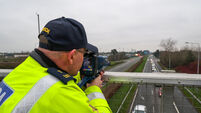Remains of O'Neill castle uncovered in NI
Remains of a medieval castle believed to be one of the first built in Ulster have been uncovered in a former Co Tyrone military base.
They are thought to date back to the early 14th Century and to have been built by Irish chieftain Domnall O’Neill.













